The Journey Of The Romanian Women
The Journey Of The Romanian Women
The Journey Of The Romanian Women
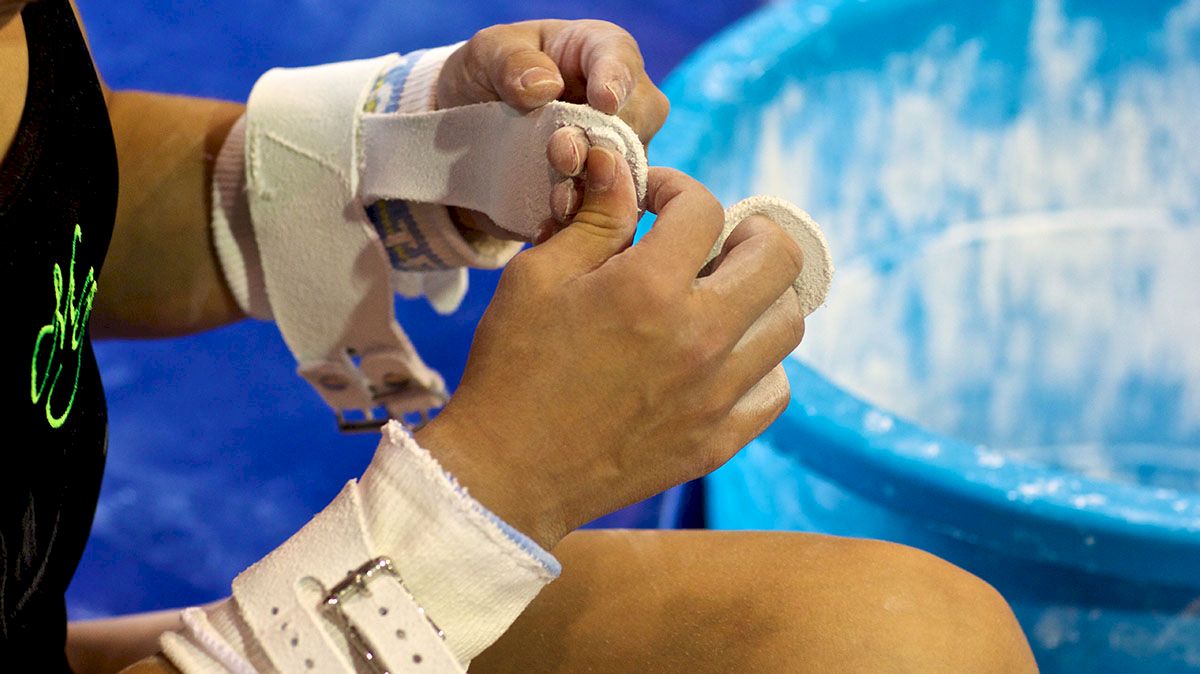
It all started with a perfect 10. Since, we have seen them grow into World and Olympic Champions and then seem to fade away slowly, their potential lying just under the surface. They have dealt with joy, pain, achievement, disappointment and controversy. In recent years, we have seen them making a comeback. And this time, they may be on top of the world again.
They are the Romanian women’s team.
Nadia Comaneci started the massive snowball of success for the Romanian women in 1976. She scored the first perfect 10 at the American Cup that year and repeated the feat again at the Montreal Olympics several months later. Until then, all eyes were on the Soviet Union and Soviet gymnasts like Ludmilla Tourischeva and Olga Korbut. For the rest of the 1970s, Romania continued to make a name for themselves in the sport, winning medals in almost every international competition. At the 1979 World Championships, they once again achieved what most thought was impossible. They defeated the Soviet Union and won the team gold medal. By today’s standards, it would be like a level ten gymnast winning the Olympic All Around gold in front of Aliya Mustafina or Jordyn Wieber. Impossible. And to add insult to injury for the Soviets and to make the Romanians look that much more impressive, they won the gold without their star, Comaneci.
In the early 1980s, they continued to rise in the ranks and began to have more individual success as well. At the 1984 Olympics, they won their first Olympic team gold medal. It was not a fully attended Olympics with the Soviets boycotting the United States hosted Games, but it was still a major achievement. At those Olympics, Ecaterina Szabo and Simona Pauca were the stand out stars. In the all around, Szabo took the silver and Pauca the bronze and they won several gold, silver and bronze medals in the apparatus finals.
In the late 1980s, Aurelia Dobre and Danielia Silivas made their mark on the sport, Dobre winning the all around at the 1987 World Championships and Silivas winning silver with the team, silver in the all around, bronze on vault and gold on uneven bars, balance beam and floor exercise at the 1988 Olympics.
The early 1990s were no less successful for the Romanian women. They continued to win World Championship medals, many being gold. At the 1992 Olympics, they won team silver and Lavinia Milosovici won gold on vault and floor exercise. She scored a perfect 10 on floor, which was the last event for the women at those Olympics. What started with a Romanian ended with a Romanian. It would be the last perfect 10 the sport would see.
The team went on to win the World Team gold medal every year from 1994 to 2001. They won team bronze at the 1996 Olympics and Simona Amanar won gold on vault and along with Milosovici scored the highest on uneven bars in the compulsory competition with each scoring 9.850. And Maria Olaru would become the first Romanian to win a World all around gold since the 1980s at the 1999 World Championships.
The 2000 Olympics started as a perfect dream come to life for the Romanian women. They won the team gold and swept the all around with Andreea Raducan winning gold, Amanar the silver and Olaru the bronze. In the first day of apparatus finals, Raducan won the silver on vault. But the next day, they were forced out of their perfect dream and into a nightmare. Raducan tested positive for use of a banned substance found in cold medicine she had taken prior to the all around competition. The team doctor who gave her the medicine came forward to take the blame. Even so, the International Olympic Committee had to follow the rules and procedures. Raducan was stripped of her all around gold, moving Amanar into first, Olaru to second and Liu Xuan of China into third. Amanar went on the win the bronze on floor.
Along with the disappointment of the 2000 Olympics, Lavinia Milosovici and Alexandra Marinescu (who was on the 1996 Olympic team and the 1995 and 1997 World team) came out against the Romanian gymnastics system with accusations that they were mentally abused and forced to train to the point of complete exhaustion while competing during the 1990s. Octavian Belu, the legendary coach of the Romanian women, dismissed their allegations and shortly after, most of the gymnastics world moved on as well.
Andreea Raducan continued to compete after 2000, winning gold with the team, bronze in all around, bronze on vault and gold on beam and floor at the 2001 World Championships. After a poor showing at the 2002 Worlds, she officially retired from gymnastics.
At the 2003 World Championships, they won team silver and Catalina Ponor won silver on beam and floor. The only way for the team was up going into the Athens Olympics.
The 2004 Olympics once again put the Romanian women back on top, winning the team gold for the second time. No Romanians medaled in the all around, but Monica Rosu won gold on vault and Ponor won gold on beam and floor. After the Olympics, however, coaches Octavian Belu and Mariana Bitang left their post, feeling underappreciated for their work. This would change everything for the Romanian team.
The 2005 World Championships did not have a team competition. Ponor was the only medalist, winning the bronze on balance beam. And the 2006 Worlds once again was not their most successful year. The team placed fourth and was almost two full points behind third place Russia. Sandra Izbasa was the only medalist, winning bronze in the all around and silver on beam. The 2007 Worlds was a much better showing for them. After a huge mistake in the last rotation from Russia, the Romanian women won the bronze. Steliana Nistor won the silver in the all around and on beam.
As the 2008 Olympics began, many were expecting to see a near perfect Romanian team as they had in 2000 and 2004. But it was clear during prelims that their former brilliant shine was now barely a glimmer. Beam, the event which Romania is historically great, had many major breaks, balance checks and missed connections. Even so, they were able to score in the low 15's, but could have scored much higher. Floor, vault and bars had very low scores with the exception of Nistor scoring a 15.975 on bars and a 15.475 from Izbasa on floor. The team qualified to the team final in fourth behind Russia.
The two time Olympic team gold medalists were now not even the focus for many and not expected to crack the top three. But after several falls from the Russians, Romania, who performed much better than in prelims, surprised everyone, winning the bronze. It was truly a Cinderella story. Like in 2004, they did not have a medalist in the all around. In the first day of apparatus finals, Cheng Fei of China, the favorite to win gold on floor, fell, opening the door for others to win. Izbasa was the last to compete and she did not disappoint. She scored 15.650 to win the gold. Once again, they made what many thought was impossible, possible.
The 2009 World Championships once again did not have a team competition. Ana Porgras was the only Romanian woman to compete in the all around, placing seventh. She went on to win bronze on bars and was the only Romanian woman to win a medal that year.
At the 2010 Worlds, the team placed fourth and did not have an all around medalist. Porgras was not able to repeat a medal on bars, but won gold on beam. And Diana Chelaru won silver on floor.
In 2011, Octavian Belu and Mariana Bitang returned to coach the Romanian women. And Catalina Ponor made her come back, looking almost as strong as she did in 2004. The goal was to prepare them for greatness once more at the 2012 Olympics. At last year’s Worlds, the team placed fourth and for the first time in decades, did not win a medal in the all around or apparatus finals. But the coaches stated that this was just the beginning and that the real goal was being ready for the London Olympics.
It has been eight years since Romania, as a team, has stood atop the medal podium. They hope to show that they are not fading away, but carefully watching and crafting their passion to what it once was. Will they have the Midas touch once more? The world will know the answer in August.
Below are videos showing some of the major of the Romanian Women.
Nadia Comaneci scoring the first perfect 10 at the 1976 American Cup.
Lavinia Milosovici scoring the last perfect 10 on floor.
Simona Amanar winning gold on vault at the 1996 Olympics.
The team winning gold at the 2000 Olympics.
Catalina Ponor on floor, securing the team gold at the 2004 Olympics.
Sandra Izbasa winning gold on floor at the 2008 Olympics.
Ana Progras winning gold on beam at the 2010 World Championships.
Related Content
 Replay: Lander vs Mars Hill | Mar 28 @ 6 PM
Replay: Lander vs Mars Hill | Mar 28 @ 6 PMMar 29, 2024
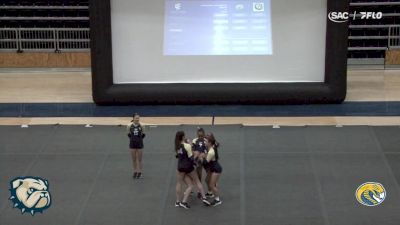 Replay: Coker vs Wingate | Mar 21 @ 6 PM
Replay: Coker vs Wingate | Mar 21 @ 6 PMMar 22, 2024
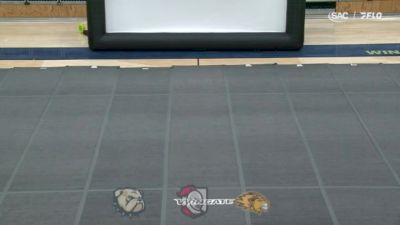 Replay: Wingate Tri-Meet - Acrobatics & Tumbling | Mar 15 @ 5 PM
Replay: Wingate Tri-Meet - Acrobatics & Tumbling | Mar 15 @ 5 PMMar 15, 2024
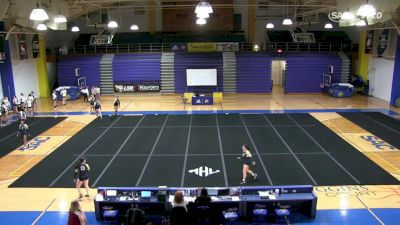 Replay: Mars Hill Tri-Meet | Feb 16 @ 6 PM
Replay: Mars Hill Tri-Meet | Feb 16 @ 6 PMFeb 17, 2024
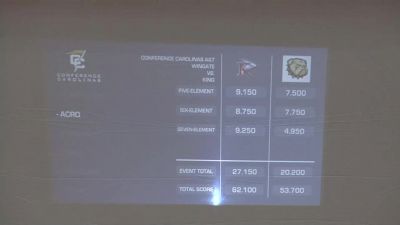 Replay: King (TN) vs Wingate - 2024 2024 King (TN) vs Wingate - Acrobatics & Tumbling | Feb 10 @ 4 PM
Replay: King (TN) vs Wingate - 2024 2024 King (TN) vs Wingate - Acrobatics & Tumbling | Feb 10 @ 4 PMFeb 10, 2024
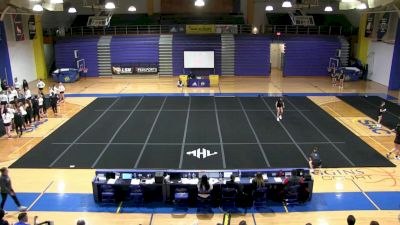 Replay: Belmont Abbey vs Mars Hill | Feb 10 @ 3 PM
Replay: Belmont Abbey vs Mars Hill | Feb 10 @ 3 PMFeb 10, 2024
 How to Watch: 2024 King (TN) vs Wingate - Acrobatics & Tumbling | Gymnastics
How to Watch: 2024 King (TN) vs Wingate - Acrobatics & Tumbling | GymnasticsFeb 10, 2024
 How to Watch: 2024 Wingate Tri-Meet | Gymnastics
How to Watch: 2024 Wingate Tri-Meet | GymnasticsFeb 8, 2024
 How to Watch: 2024 Wingate Tri-Meet | Gymnastics
How to Watch: 2024 Wingate Tri-Meet | GymnasticsFeb 8, 2024